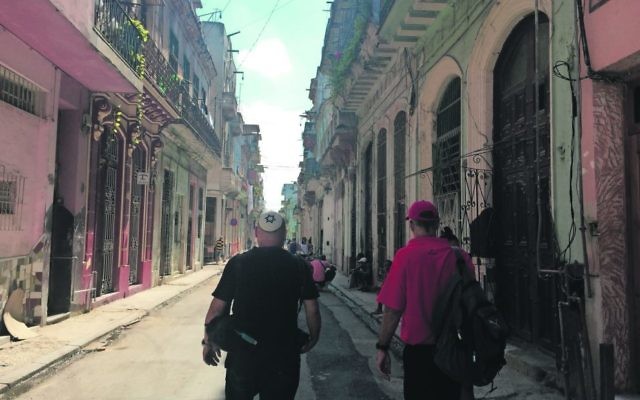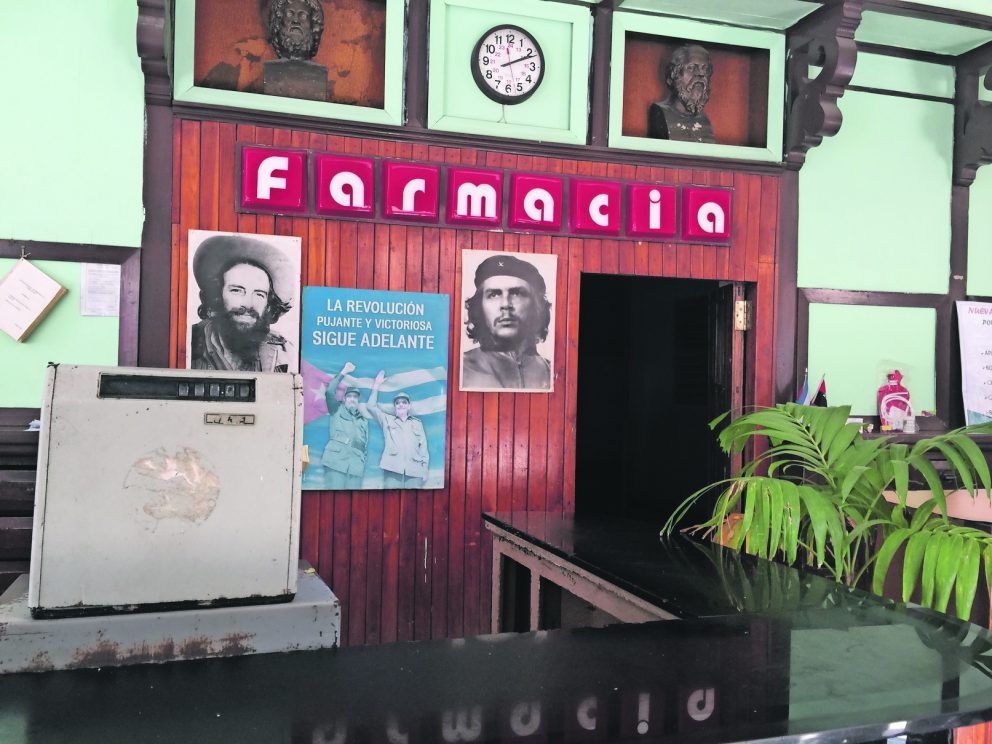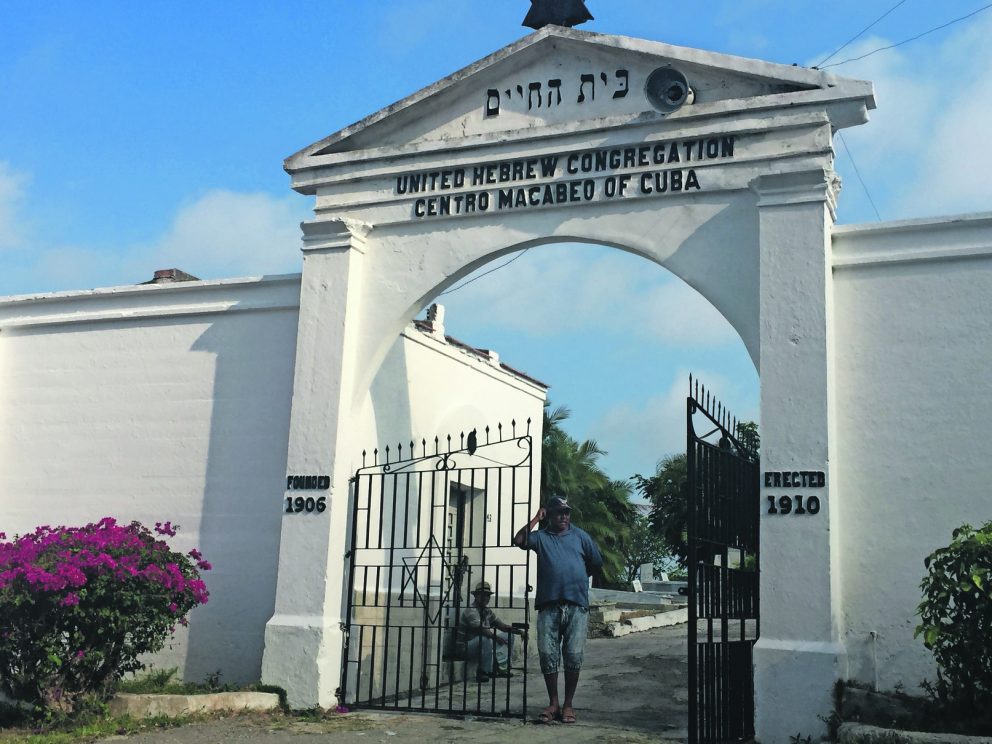On a mission to Cuba
The Joint Australia recently took part in a mission to Cuba, assisting the country’s 1500 Jews with much-needed aid. Learning that the island nation is more than pastel pops of baroque architecture and a cultural gem devoid of 21st century excess, the group discovered a Jewish history – and a Jewish present. Rebecca Davis reports.
CIGARS and salsa music. Cadillacs and Castro.
Think of Cuba, and one would be forgiven if the thought of a thriving Jewish epicentre does not immediately spring to mind – and yet it was there.
The Cuban Jewish community has fought their way back from the brink of extinction, and recently a group of 10 Jewish Australians travelled to Cuba with The American Jewish Joint Distribution Committee (The Joint) to learn about what was once the most vibrant of Diaspora communities. In the face of revolution, communism, the isolation of embargo, and a mass exit of Jews, Cuban Jewry has proven to be a resilient and spirited people who continue to stand strong.
The Cuban Jewish landscape is historically diverse. Following the Spanish Inquisition, Ladino-speaking Jews fled to Cuba, planting the roots for a strong Sephardic community. A subsequent large influx of Jewish immigrants resulted from the fall of the Ottoman empire in 1922; and later, Ashkenazi Jews emerging from the debris and destruction of post-Holocaust Europe set sail for the Caribbean Island.
At peak, 15,000 Jews called Cuba home. But everything changed when Fidel Castro rose to power in 1959, and communism gripped the country. Officially atheist, religious practice was outlawed. A staggering 90 per cent of Jews left Cuba, most opting for the United States. With state-sponsored communism infiltrating every echelon of Cuban society, Jewish expression was stifled and an inherent disconnect of Jews from their heritage ensured for the remaining 10 per cent.
By the mid-1960s, trade and diplomatic relations with the United States were suspended, and remained the status quo for more than 50 years.
The course altered in the early 1990s when Soviet communism fell, and with it, Soviet aid – resulting in a severe economic downturn including widespread food shortages, air and water pollution, biodiversity loss and deforestation. Although, it was at this time that religious freedom returned to Cuba, with a constitutional amendment that shifted their stance on religion from atheist to secular. For the first time, an opportunity for Jewish aid was created and The Joint answered the call for assistance.
The Joint has a long history in assisting Jewish communities worldwide facing struggle and oppression. Aside from sending desperately needed supplies, the organisation also sends missions – travelling contingents – from their various international branches.
“The aim of our missions is to provide an experience that is beyond the reach of the average Jewish tourist and allow our participants meaningful time inside the lives, homes and villages of these remote and forgotten Jewish communities,” says Joint Australia director Caryn Farber.
And so, earlier this year, 10 Australian Jews set off to Cuba for 10 days.
DURING their time in Cuba, the group was immersed in Jewish life. They visited Havana’s old Jewish Quarter, the United Hebrew Congregation Cemetery and Havana’s three remaining Jewish congregations, shares Farber who also accompanied the mission.
The group were heartened to discover a full library of Jewish books at the Patronato Synagogue and Community Centre – books which are a popular source of reference and education for Jews throughout Cuba. The Community Centre also houses a pharmacy supported by The Joint’s Cuban Relief Project. On a list obtained by The AJN, medicine is one of the most desperately sought after items by the Cuban Jewish community, with supplies and medicines for the treatment of cancer, diabetes and simple cold and flu relief urgently requested. The list also prioritises female hygiene products, and basic practical items, including shampoo and conditioner, soap and toothpaste.
“Everything you bring is meaningful, and nothing is wasted,” says Farber. She remembers the plastic bags which carried the donated supplies were received with as much care as the supplies themselves; the group’s bus driver carefully collecting the bags, and fastidiously folding each, saving for later use.
The Australian visitors were invited to join in a communal Shabbat dinner, the only meal of the month where Havana’s Jews are able to eat their rationed kosher meat. Aside from delivering food and medicine to the local families, the Australian group donated 10 wheelchairs and ensured the repair of the community van that allows those who live beyond walking distance of the community to join.
Despite the adversities, there is a firm resurgence and reclaiming of Jewish identity. A daily minyan meets at Havana’s traditional Orthodox Synagogue, Adath Israel. The Sephardic Hebrew Centre community Sunday school is filled with adults and children weekly, also holding a Hebrew teacher’s school. And interestingly, conversions are on the rise.
SANTA CLARA is a three-hour journey from Havana. The village is set against the central Cuban countryside and is home to the small Jewish community, Communidad Tikun Olam. While the shule may be dilapidated, it is not the only common link of understanding between the Australian group and the local community. Depicted on a wall mural of sun-faded tiles is the Jerusalem skyline: the familiar domed roofs and sandstone walls peeking out beneath an azure horizon punctuated with clouds. The mutual love for Israel transcends the language barrier.
“It was the first time we’d had the privilege of sharing time with our brothers and sisters from that country [Australia]; we know theirs is a community very committed to Judaism and to Israel, and this brought us close from the first moment,” shared David Tacher, Communidad Tikun Olam president.
“They asked us about our history and shared our daily life – everything just flowed, as though we had known each other all our lives. Our shared ideas and thoughts marked the beginning of a beautiful friendship.”
The friendship was further solidified in a “very special moment” as they together visited the Shoah Monument that Tacher had erected in the local Jewish cemetery.
A bemused Farber shared: “What I found so fascinating about Cuba was that, despite its long and thriving Jewish past and being located only 500 kilometres from the United States, this is a Jewish community that very nearly disappeared, and yet, today, with The Joint’s help, is once again a hub of Jewish life.”
“When you see the power and resolve of Jewish continuity playing out in real time in front of your eyes, it’s a very humbling and emotional experience.”
REBECCA DAVIS
For more information about the The Joint’s efforts with the Jewish community of Cuba or other worldwide missions, email caryn.farber@jdc.org





comments